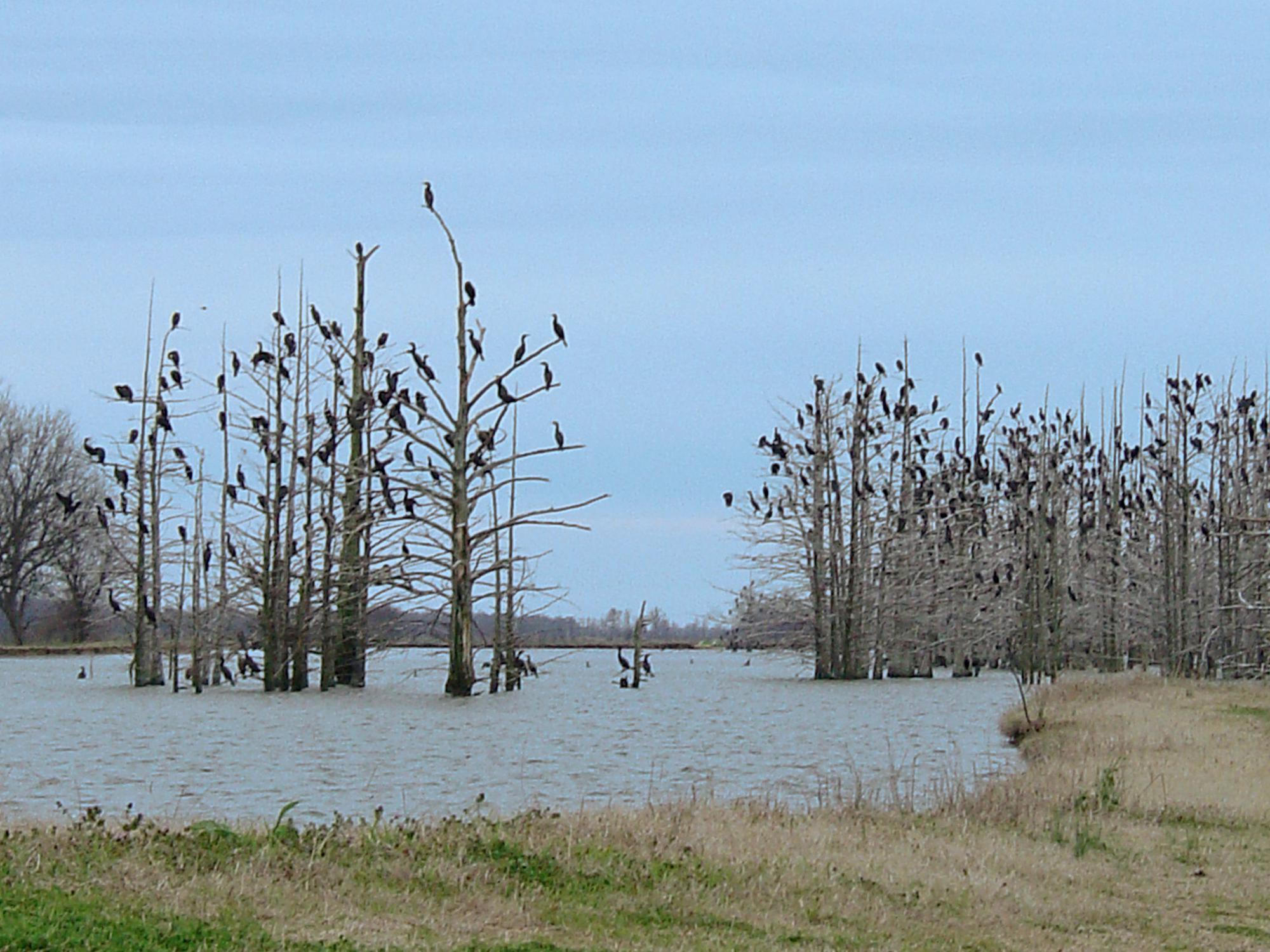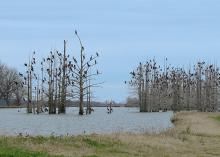Information Possibly Outdated
The information presented on this page was originally released on May 4, 2018. It may not be outdated, but please search our site for more current information. If you plan to quote or reference this information in a publication, please check with the Extension specialist or author before proceeding.
Mississippi catfish are going to the birds
STARKVILLE, Miss. -- Over the past 15 years, there has been a steady decline in Mississippi catfish production.
According to the Mississippi State University Extension Service, between 2002 and 2010, about 54 percent of Mississippi catfish farmers converted their pond acreage into corn and soybean fields. The number of acres devoted to ponds has dropped from 130,500 to 34,700. Increasing catfish feed and fuel prices have significantly increased farmers’ operating costs, but revenue from catfish has not increased at the same rate. This loss of income has had a devastating impact on many farms throughout the state.
Additionally, imported catfish increased from 30 million pounds in 2005 to 204 million pounds in 2011. Imported catfish is less expensive than U.S. farm-raised catfish. Therefore, farmers cannot compete with these foreign markets.
Catfish losses due to diseases and fish-eating birds have also caused millions of dollars in losses to the catfish industry. One bird alone -- the double-crested cormorant -- causes upwards of $15 million in damages, eating almost 2,000 metric tons of catfish from Mississippi ponds each year.
The double-crested cormorant is a migratory seabird related to the pelican, which coincidentally is also infamous for eating catfish. Both birds can be quite large, with wingspans of more than 4 feet. The birds prefer mature fish between 5 and 10 inches long, and they can eat up to 5 pounds per day. During the period before migration, they can double that consumption.
Mississippi, in addition to getting migratory birds from as far away as Canada, has resident populations of cormorants and pelicans. Conservative roost estimates in Mississippi are near 75,000 cormorants. In addition, wading birds, such as egrets and cranes, comb the edges of ponds for catfish fingerlings. In total, these birds have the ability to clear a 10-acre pond of catfish in less than three weeks.
All of these birds are protected federally by the Migratory Bird Treaty Act of North America, so outright killing them is highly illegal. Catfish producers resort to a variety of methods to scare cormorants and other birds off their ponds and keep them moving.
Producers commonly use devices such as propane cannons, screamers, bangers and nets. Unfortunately, these types of harassments are not one-time fixes. Personnel must continually detonate the scare devices and hope that the birds do not become accustomed to them.
Researchers from the National Wildlife Research Center, part of the U.S. Department of Agriculture Wildlife Services, have spent years researching cormorant activities to decrease depredation on catfish. One additional method they have found is roost dispersal.
Catfish producers experiencing devastating depredation by these birds may apply for a Form 37 through the U.S. Fish and Wildlife Service to implement lethal control methods.
MSU was actually the first institution to work with catfish farmers to assess production needs and human-wildlife conflicts occurring in and around pond operations. Researchers are currently working with farmers to explore different pond designs that would make production more efficient and decrease bird feeding. The MSU Extension Service has a facility in Stoneville exclusively dedicated to aquaculture.

Editor’s Note: Extension Outdoors is a column authored by several different experts in the Mississippi State University Extension Service.




